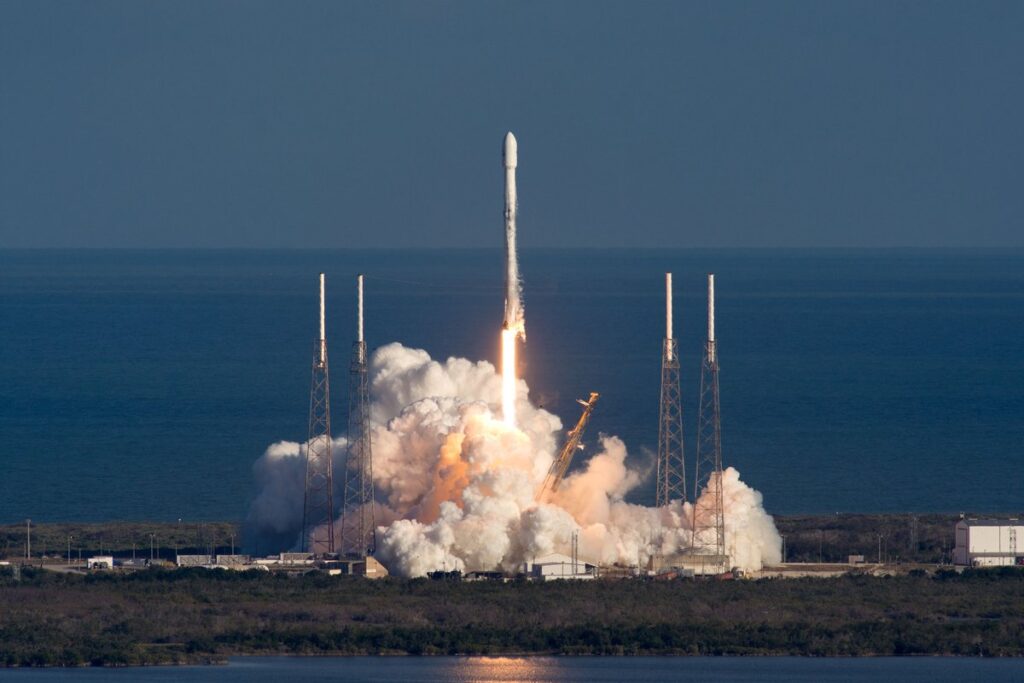The past few months have been filled with exciting, and ground-breaking space news. From the addition of innovative earth monitoring NASA sensors hitching a ride on a commercial satellite, to a new public-private partnership that’s enabling ground-breaking capabilities, to mind-bending rocket launches – this bevvy of space news has the world once again riveted by the potential of our commercial space enterprise.
What, exactly, has been happening? Let’s take a look at some of the headlines:
SpaceX’s Falcon Heavy Launch Brings Humanity One Giant Leap Closer To Mars
If going to the Moon is redundant and boring to people, maybe we have to set our sights out a bit further. What if we went to Mars? That’s exactly what this week’s incredibly historic and significant launch of Space X’s Falcon Heavy Rocket could enable in time.
This article by Forbes does an excellent job of laying out the challenges that Mars and other deep space exploration creates for the scientific community. It also lays out just why the Falcon Heavy launch was so significant.
To sum up, getting people onto Mars would take preparation and sending a lot of equipment and supplies in advance. Previous rockets and space shuttles have been powerful and capable of carrying large payloads, but they’ve been extremely expensive and can only be used once. Falcon Heavy changed all of that. It’s a fraction of the cost of previous rockets, and its boosters can be recovered and reused.
Is this week’s test launch – which achieved low-Earth orbit – immediately going to enable us to send men to Mars? No. But it’s an important first step in overcoming the cost challenges that Mars missions have always faced, and an exciting development for the future of space flight and exploration. It also flung a pretty rocking car into space…so that’s pretty awesome.
NASA’s GOLD Mission Powers on for First Time After Eventful Launch
Not to be outdone by an upstart commercial space flight company, the original founder of the space industry – NASA – did something pretty incredible in the past few weeks as well. NASA launched a hosted payload designed to help gauge weather and temperatures in an important region of the atmosphere influenced by weather events on Earth and in space.
What was truly exciting and revolutionary about this payload was that it wasn’t aboard a NASA satellite. Instead, the payload was carried to space onboard SES-14, a commercial satellite owned and operated by COMSATCOM provider (and Government Satellite Report sponsor) SES.
By launching GOLD as a hosted payload onboard a commercial space craft, NASA was able to execute its mission at a fraction of the cost by effectively hitching a ride to space. That strategy was validated when the GOLD payload was turned on – albeit temporarily – following launch and everything appeared to be functioning.
Click the link above to the Space.com article to learn more about GOLD and its timeline to start science operations. Additional information about GOLD is available HERE.
Falcon 9 soars into space with GovSat 1
And not to be outdone by NASA, Space X made news again this past week when it reused a rocket to launch another exciting and revolutionary satellite – GovSat-1.
Designed exclusively for the government and defense community, GovSat-1 is the first satellite of GovSat, which is a joint venture between the Government of Luxembourg and SES.
GovSat-1 was designed for dual use to support both defense and civil security applications, including mobile and fixed communications. It is a multi-mission satellite that offers X-band and Military Ka-band capacity. The spacecraft will provide up to six high-powered and fully steerable spot beams, as well as an advanced Global X-band beam.
GovSat-1 is the first commercial satellite designed to only carry government and defense communications. The fact that it made its way into space onboard a flight-proven rocket just adds to its status as a history-making satellite.
For additional information about GovSat-1, download a brochure by clicking HERE.
